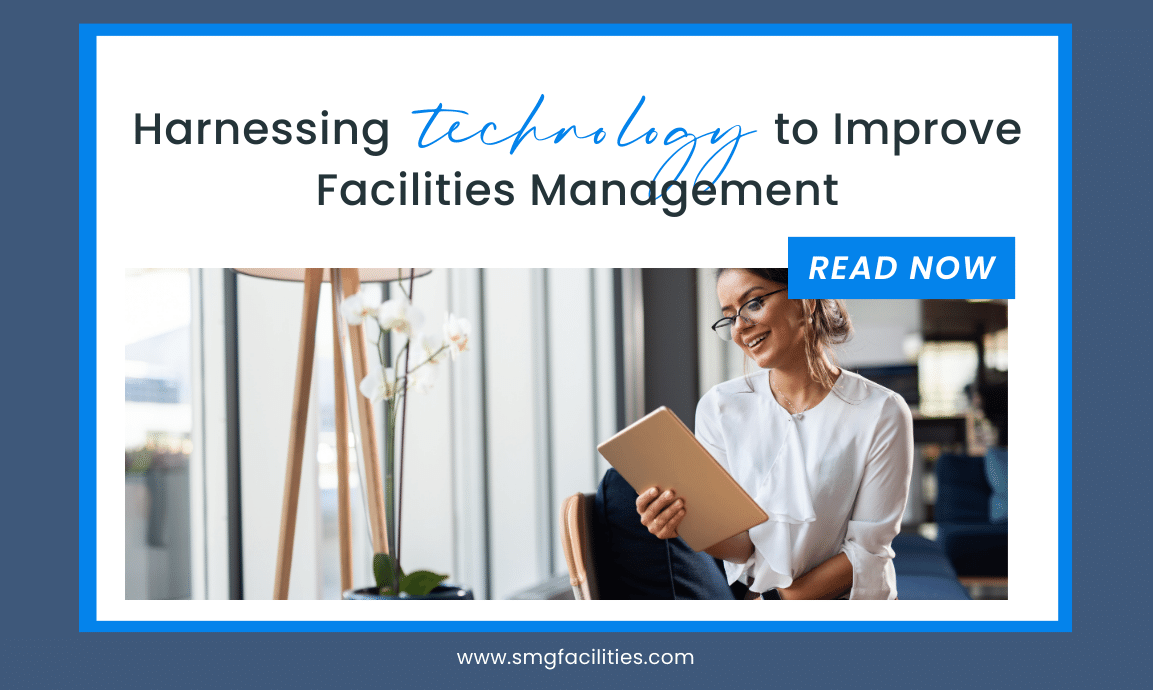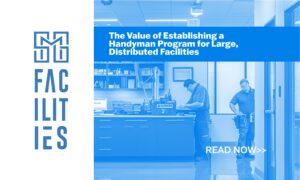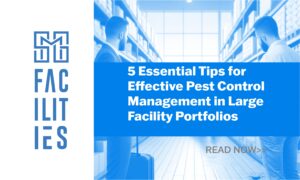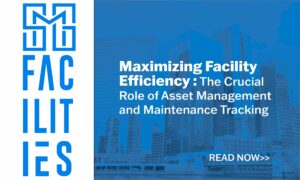Facility management is the process of determining the tools and services that support the functionality, sustainability, and safety of buildings, property, and infrastructure. In other words, facilities management evaluates the physical portion of day-to-day operations crucial to a company’s needs, function and “brand”. Facilities management includes:
- Maintenance and operations
- Energy management
- Space management
- Employee experience
- Capital project planning and management
- Emergency management
- Real estate management
- Lease management
Essentially, facilities management is in charge of all the systems and facilities that help keep the company efficiently moving along. Facilities professionals must also ensure that their buildings adhere to legal requirements and relevant health and safety standards. Today, there is growing concern about a company’s environmental impact and maintaining strict security. In all of these aforementioned areas, facilities management technology helps make the process even more efficient, and, in many cases, they rely on technology.
This blog delves into the relationship between technology and facilities management and how technology can be an effective and efficient tool for facilities managers. It can help a company save money, resources, time, and energy. We will discuss the benefits, challenges, solutions, types, and latest facilities management technology trends.
Identifying the Right Technology
For facilities management to ensure everything is working at an ideal level, managers must have real-time access to extensive, reliable and “actionable” data. This is where having the right facilities management technology can make a difference. No matter what area — HVAC systems, energy management systems (EMS), lighting, elevators, indoor air quality (IAQ) security setups, and parking facilities, among many others — there needs to be accessibility to relevant, accurate, and up-to-date information to analyze a facility’s needs.
It is vital that facilities professionals do research to find out which types of technology are not only reliable but also whether it suits your business needs and can grow with your company. Here are three schemes using technology tools to help you with analyzing performance and finding ways to improve:
Strategic Space Planning
Using automated data collection, real-time reporting on demand, and continuous monitoring, strategic space planning can help define the space needed for business initiatives. It helps provide space allocation choices to meet those needs and can also prioritize how to go about implementing those additions. In essence, this plan gives you an overview of how workers use the facilities across multiple locations and what should be considered to optimize the available space over time.
Enterprise Asset Management
Maintaining and regulating operational assets and equipment is another crucial part of facilities management. Enterprise asset management combines software, systems, and services to help with just that concern. This management plan can help enhance the quality and usefulness of assets during their lifecycle. It can also increase productive uptime, decrease costs and extend useful life of critical assets. Managers can track equipment maintenance in real time and automate the tracking of assets across departments and facilities. Repair schedules, downtime, and maintenance costs are among the metrics available to consider when making decisions concerning facility investments.
Smart Building
A building that is both productive and energy efficient is the ideal type of facility. Smart building is a solution based on IoT or “internet of things” technology that optimizes equipment in a facility — HVAC, EMS, IAQ, lighting, and security, to name a few — with the help of hardware and software that is intended to establish a comfortable and safe environment. Building operation data is analyzed in real-time and can identify where building upkeep and maintenance are needed.
Implementing Technology
There are many places where technology can make a difference in facilities management. Let’s look at the steps that can help you use technology to reach the next level of success.
Establishing a Plan of Implementation
A goal without a plan is just a wish and there is very little chance anything will go right. So establishing an agenda of your needs and wants is the first step. What type of impact do you want to have? What areas of your business are of most concern? What type of advances in facilities management technology will be the best fit for your company? What investment(s) in existing technologies can be leveraged? What are your long-term plans for facilities management? How much will the implementation of these improvements cost? How do you define the return of investment (ROI)?
All of those questions, and no doubt quite a few others, are what you need to consider before advancing to the next stage. Technology can play a key role in answering those questions and creating others. Here are some examples:
- Building information modeling (BIM): This process uses technology to represent a facility and its assets digitally. When used with other facilities management software, it can provide detailed access to how a building performs. BIM can be used to analyze an existing facility. It can yield important information, such as performance data and specifications, that are regularly updated and can easily be made available to the maintenance department to increase maintenance efficiency and reduce maintenance-related downtime.
- Virtual modeling: Used along with BIM and other software, digital twin or virtual modeling can create a computer-generated 3D simulation of facilities. With it, managers can simulate a certain scenerios regarding the change to equipment or structure before they are actually physically inserted. This can also help with ways to utilize space better, design more efficient workflows, estimate energy usage, and improve safety precautions by running simulations.
- Augmented reality: While augmented reality (AR) is still in the early stages of development, managers can still use it in facilities management. Augmented reality is a technology that superimposes a computer-generated image on a user’s view of the real world. Effective augmented reality can furnish extra visibility to equipment and infrastructure that could be difficult to reach, such as pipes in the walls, underground tunnels that are dangerous to navigate, and equipment that is hard to reach as well as help training service technicans on maintain equipment.
Training Staff on the New Technology
Once you have determined the plan, the first part of implementing the technology is to train team members. It can be beneficial if a few things are kept in mind when instructing others about technology.
- Seeing the whole picture: Implementing new software can have many variables to understand. That is why it’s important to ensure all team members understand the overall goal of having the technology and what part they will play in reaching the goal.
- Keep communication lines open: Instead of blanket emails announcing the coming of new technology or broad instructional messages that can be overwhelming, ensure each area affected by the latest technology receives communication specific to its role. Give them the ability to communicate that they are not grasping it or if they have ideas about improving it.
- Provide specific training with multiple formats: Instruction should be given with the exact task in mind rather than wide-ranging guidance that can bog down what your employees need to learn. Training should be offered in different formats, such as online or in person, to accommodate employees who learn better in a particular style.
Monitoring the Progress of the Technology
The plans have been implemented. Now it’s time to see if the changes in facilities management technology are practical and efficient. This is where artificial intelligence (AI) and machine learning (ML) comes into the picture. They can help perform building analysis to regularly update facility managers with the changes in their workforce, asset health, and sustainability. AI and ML techniques use data to find patterns that make it easier to understand peak-hour demand and advantageous equipment lifecycles.
Reaping the Rewards
With the necessary technology tools and the reliable data they can provide, facilities management can make informed decisions about what changes to make in both facilities and processes. Those improvements can lead to three key benefits for your company.
Cost Savings
Technology can help your bottom line look much better in many ways. When technology makes processes more efficient, there is less waste. In these days of rising operational costs, that is especially important in saving money. Also, by creating better ways to conserve energy, technology saves dollars that would otherwise be going to higher energy bills. Technology also plays a role in alerting facilities professionals when a piece of equipment needs maintenance before a costly breakdown will occur.
Improved Efficiency
Improved efficiency and cost savings often run hand in hand. Technology allows for ways to aggregate, combine, identify, and display “actionable” data that can help you make better decisions that will improve efficiency. That efficiency can come in many forms — cleaner procedures, more finely tuned machines, and improved worker practices. A facility that uses technology runs smoother and not only improves efficiency and saves money but generally improves the mindset of its employees.
Enhanced Guest Experience
Another group that will benefit from the use of technology are the guests. If technology is helping facilities management improve efficiency, then those practices will help make a much smoother and faster ride for their products to make to the guest. That means guest experience is improved, and they will likely be more appreciative and receptive to using your company again. If the cost savings for the company increase, that can sometimes mean savings are passed on to the customer, creating even more goodwill and sales.
SMG Can Help You Leverage Technology and Take Your Business to the Next Level
There is so much gain by adding or increasing technology in facilities management. Companies can save money, sharpen efficiency, improve sustainability, and boost their image in the outside world with new facilities management technology. With all those benefits, it’s easy to see why new technology becomes a game changer. If this new world might be a little too much to handle, don’t worry because SMG Facilities can help. Since 1996, SMG Facilities has been committed to client success by providing comprehensive professional services and extensive expertise in facilities maintenance, construction, project management, disaster, and emergency response to multi-site businesses throughout North America. In addition to a friendly, expert staff, SMG provides technology in the form of a single platform to automate and analyze facilities management processes with actionable data that drives efficiency. Learn more about SMG at our website.





